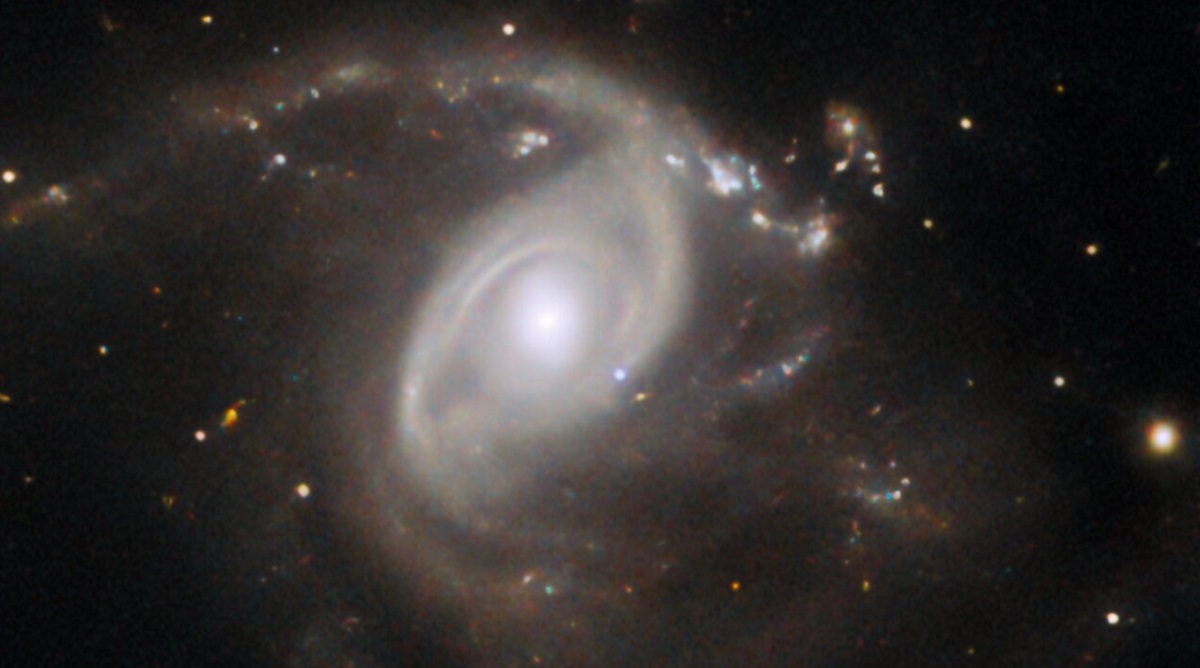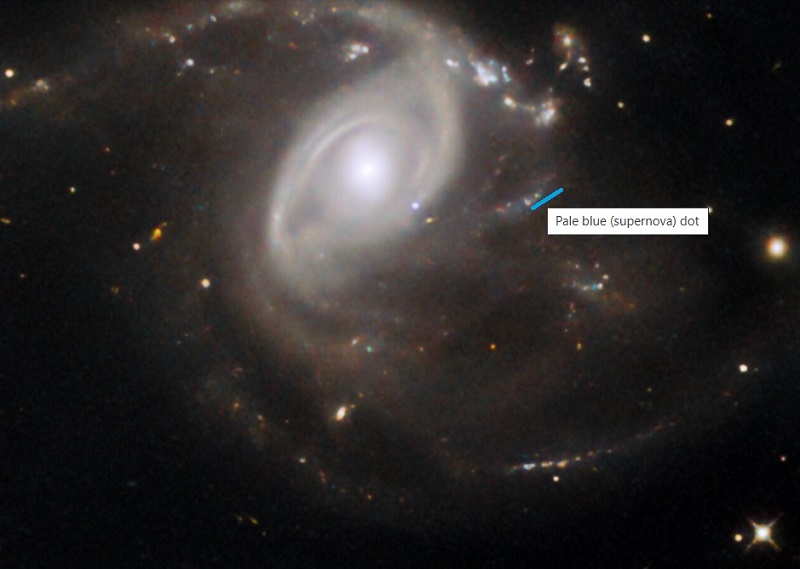The Hubble telescope has captured a stunning photo of a bright supernova in a distant galaxy some 650 million light years away

The year 2025 marks the 35th anniversary of the launch of the Hubble Space Telescope, which has made an invaluable contribution to the exploration of deep space.
NASA and the European Space Agency (ESA) regularly publish stunning photographs taken with the Hubble Space Telescope.
Here's What We Know
On the official X-page of Hubble, all space lovers can see many mesmerising photos and learn interesting facts about our Universe.
Thus, today published an image of the galaxy LEDA 22057, which is located at a distance of about 650 million light years in the constellation Gemini.
LEDA 22057 is the site of a supernova explosion, which was discovered exactly one year ago - in January 2024. The supernova is visible in this image just below and to the right of the centre of the spiral galaxy as the pale blue dot SN 2024PI.

Photo of the supernova SN 2024PI. NASA/ESA source
SN 2024PI is classified as a Type Ia supernova and its formation requires a White Dwarf, whose cooled core corresponds to eight solar masses. When a star of this size uses up the supply of hydrogen in its core, it swells to the size of a Red Giant, after which it cools down and begins to collapse, emitting a bright glow.
It is a Type Ia supernova, which occurs in a binary star system ⭐⭐ in which one of the stars is a white dwarf: the crystallised core of a star with a mass less than eight times the mass of the Sun. 2/3
- HUBBLE (@HUBBLE_space) January 27, 2025
Note that this fate awaits all stars in the Milky Way, which will one day turn into white dwarfs, including our Sun, but it will happen no sooner than five billion years from now.
Source: @HUBBLE_space